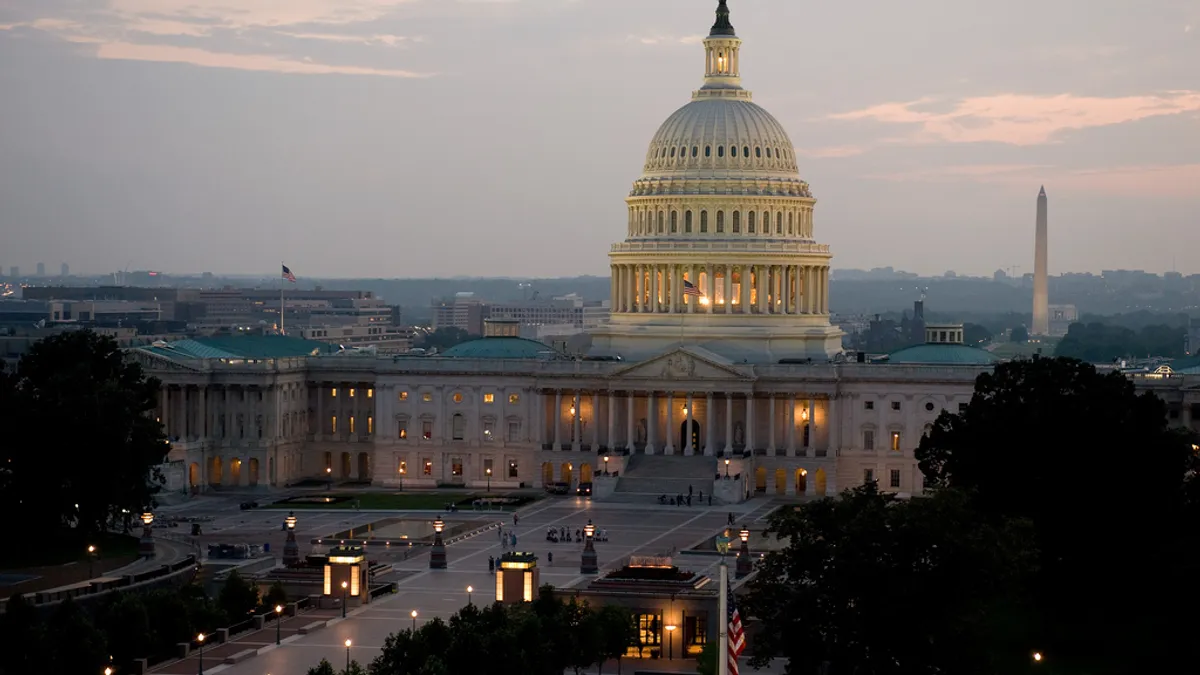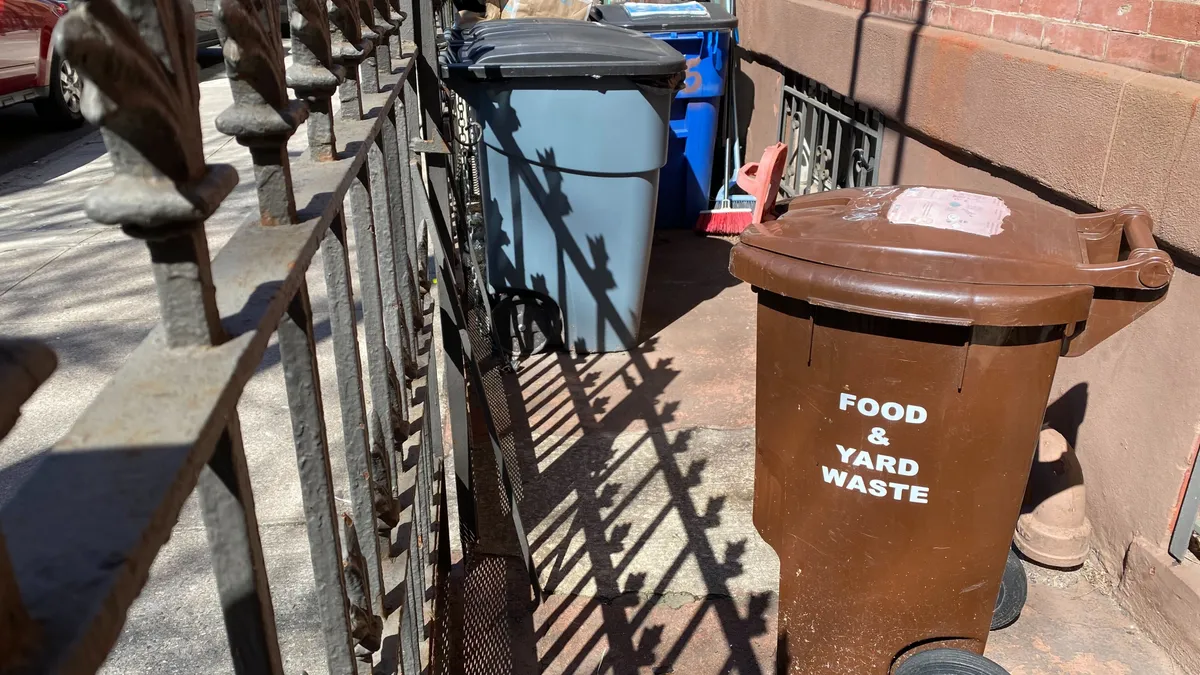Politicians declare they want to “drain the swamp” in D.C. — a metaphor that many think works on two levels because the District was built on swampland.
But the nation’s capital is not actually built on a swamp. It is, however, built on a low-lying wedge of land between the Anacostia River and Potomac River, which combine at the foot of the city and drain into the Chesapeake Bay. And for decades, the city has dumped not just runoff, but often raw sewage into the rivers that stretch into the surrounding states.
The EPA and D.C. agreed to a consent decree in 2005 after the District of Columbia Water and Sewer Authority (D.C. Water), the city’s water utility, was found to be in violation of the Clean Water Act. Under the consent decree, D.C. has come up with a $2.6 billion Clean Rivers Project that covers multiple efforts to upgrade its water systems, aiming not just to virtually eliminate sewage overflows during storms, but dramatically reduce stormwater runoff as well.
A third of D.C. uses a combined sewers, built in the late 19th century to carry both sanitary sewage and stormwater in the same pipe. When it rains heavily, the systems are overwhelmed and have to release untreated water into Rock Creek, a small waterway in the District, as well as the Chesapeake and Anacostia.
That release is called a combined sewer overflow (CSO). One of the big infrastructure works in the Clean Rivers Project seeks to eliminate the CSOs through building massive tunnels under the city that could hold more stormwater during storms. The systems of tunnels will eventually be 18 miles long. The Blue Plains tunnel was the first started and completed in 2015.
Engineering News-Record, an engineering and construction industry trade publication, gave the Blue Plains Tunnel the 2014 Project of the Year award. In 2016, it was awarded the Overall National Best of the Best Project designation. Cities from as far as San Francisco, New Zealand and Switzerland have come to look at the Clean Rivers Project.
“We’re very well known in the industry,” said Christopher Allen, Assistant Director for the Clean Rivers Project. Allen adds that the project was completed on time and on budget.
Before the tunnels, CSOs directed about 2.5 billion gallons of sewage into Rock Creek and the Anacostia and Potomac rivers in an average year. After the tunnels are done, 96% of CSOs will be stopped, an improvement over the 85% that the EPA mandates.
The project will also reduce nitrogen discharged into Chesapeake Bay by approximately 1 million pounds per year. Nitrogen, phosphorous and other nutrients are chief causes of eutrophication — giant algae blooms that deplete the oxygen in a body of water as they decompose. Each year, this phenomenon results in sprawling “dead zones” in the Chesapeake, where so little oxygen is present that aquatic life cannot survive.
The combined sewers were built starting in the early 1800s the polluting rivers wasn’t considered a problem.
“Unfortunately, most of cities east of the Mississippi had that system,” Allen said.
Older cities west of the Mississippi like San Francisco also have it. Nationwide, more than 700 cities still sport combined sewers, although plenty of places like Atlanta and Philadelphia are also in the midst of improving their systems.
To help pay for the project, D.C. Water was able the issue the first independent green bonds for a utility in the U.S. in 2014. The projects have to last at least one hundred years and pay out 4%.
"Some people want to do socially responsible things with their money and were delighted they could come up with these 100 year bonds,” Allen said.
Green infrastructure
An amended decree put out in 2016 allows D.C. to put in place green infrastructure projects to reduce the size of one tunnel and skip building one entirely under Rock Creek. It also extends the final compliance date from 2025 to 2030.
The two primary green infrastructure projects focus on bioretention, like installing tree boxes, rain gardens, vegetated filter strips, bioswales and upgrading to permeable pavement.
There are also smaller projects to offer residents free rain barrels and disconnect downspouts from sewers. The “drain the rain” program solves the problem any drop of water that hits the rooftop contributes to the CSO overloads.
"We are all part of the problem when it comes to CSOs and we all need to be part of the solution," said Bethany Bezak, the green infrastructure planning coordinator. The city said that green infrastructure will save money, create jobs, while showing results faster.
Initially, however, conservationist groups had reservations about the amended decree. The agreement that eventually came to be alleviated most of the concern.
"We support the plan the city has now,” said Phillip Musegaas, legal director for water conservation group Riverkeeper. "Our only reservation is how well the green infrastructure is going to work and how quickly the city can get it in place.”
“There are different complications that come up with green infrastructure,” said Jennifer C. Chavez, a staff attorney at Earthjustice.
Primarily, it’s much harder to track the impact than “gray” infrastructure projects, like the tunnels. The final amended consent decree has monitoring in it that will be publically available, a solution that Chavez said makes the decree acceptable for Earthjustice.
Musegaas thinks two easy things could improve the D.C. Water’s work even further. One would be a better system to warn the public when overflows are occurring. There are a few warning lights at discharge locations that are suppose to flash during storms. The posh Georgetown neighborhood has one, but during a recent storm Musegaas said he went to check and the light wasn’t on, even as discharge was pouring out.
"The system the city has now is a failure,” he said.
He’d also like the city to go out and monitor to see how much bacteria is actually out there.
“They’re dumping but I don’t think they have a good idea of how much contamination is out there,” he said.
Musegaas said Riverkeeper of course wants green infrastructure projects to succeed, their additional benefits align better with the mission of conservationist groups than gray infrastructure projects. There is a trade-off though.
“They have a good plan, they’re working hard on it, but these plans take 15 to 20 years to carry out,” Musegaas said. "We won’t really know if the green infrastructure works for a long time.”
Stormy water ahead
While not part of the consent decree, the D.C. Department of Energy and Environment (DOEE) is also working on reducing stormwater runoff. DOEE, does, however have to get a Municipal Separate Storm Sewer System (MS4) permit from EPA every 5 years that dictates water quality initiatives and programs that must be implemented to reduce pollution from stormwater.
“We’re facing some of the same problems that D.C. Water is facing,” said Jeff Seltzer, associate director at the DOEE.
DOEE’s work focuses on the two-thirds of D.C. that is served by separate storm sewers, not combined sewers. There is plenty that needs to be done to work on stormwater runoff. Although there are 2.7 million square feet of green roofs now, 44% of the city is still covered in by impervious surfaces.
“We need to retrofit a vast amount of the city,” Seltzer said.
One program to reduce stormwater runoff by DOEE is the RiverSmart Rewards, which allows residents and property owners in D.C. to receive a discount on their water utility fees if they install certain stormwater management features like green roofs, permeable pavements or driveways. Schools and communities can also take part.
There are rebates for people who plant trees on their property, install rain barrels, and put in permeable pavement. Almost 10,000 stormwater audits have been conducted through the program and nearly 5,000 homes in the District have had one or more of the practices installed.
“We get great participation with that program,” Seltzer said.
D.C. now also requires most new construction to have a plan for stormwater retention. For flexibility, DOEE allow these construction projects the option to meet up to half of their retention obligations by purchasing stormwater retention credits on an open market. Stormwater retention credits are created at other sites that voluntarily install runoff reducing green infrastructure or exceed their regulatory obligation.
“We are trying to do some things to get the market really rolling,” Seltzer said.
That includes giving a $12.75 million grant to The Center for Watershed Protection, a nonprofit, to become a dealer of last resort. So far, the trading program has 13 trades completed and two new voluntary projects that are building spare retention with hopes on a return on investment.
Every flush you take
Even outside of the consent decree, D.C. is innovating in their utilities. At the Blue Plains Advanced Wastewater Treatment Plant, a Norwegian thermal hydrolysis system that can convert treated sewage into electricity was installed in 2015. Now the plant produces about a third of the electricity it uses.
It needs all the renewable power it can get — the plant handles about 300 million gallons of wastewater a day and can do 1 billion gallons during peak days, like when big storms come through.
The plant sends sewage to four digesters that can each hold 3.8 million gallons. In the digesters, microbial bugs eat the organic matter and convert it to methane gas. That gas is used to produce electricity.
The plant, which also treats sewage from Maryland and Northern Virginia suburbs, can also now create biosolids that are graded high enough to use in an urban setting as fertilizer. Using high heat and high pressure creates a product that is much cleaner than what you’d expect to come out of a wastewater.
“I use it on my lawn, grow tomatoes, feed those tomatoes to my family,” said Christopher Peot, Biosolids Manager for District of Columbia Water and Sewer Authority. “That goes a long way to proving to people that it’s safe, which it is.”
The previous biosolids produced were legally “Grade B” and had to be shipped off to rural farms to be legally used. These new “Grade A” biosolids are sold online in bulk at bloomsoil.com. Peot said that eventually getting the biosolids into places like Home Depot is a goal.
“Eventually we’d like to be selling it all,” he said.
But even now, there is savings. The plant was spending $19 million a year to send away to lower grade quality biosolids, a full 21% of their budget.
“We’re slowly building a market for it,” he said. “It’s unlike any other biofuel out there."



















